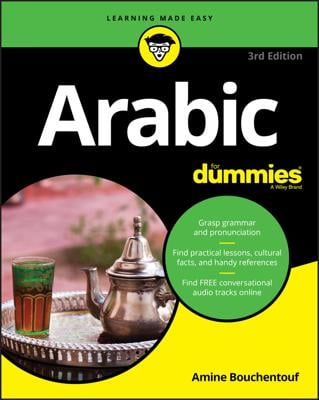Learning the proper way to make introductions in Arabic can help you get off to the right start. The Arabic language tends to be a bit more formal than American English. Consequently, introductions in Arabic follow more of a pattern than they sometimes do in the United States. Don't worry, it’s not complicated — just good manners.
Introducing yourself
First impressions are important — they can start a friendship and set the tone for your entire meeting.
Start with a greeting.
The simplest greeting is ahlan (hello) or marHaban (hello; greetings).
However, because of the conservative nature in many Arabic-speaking countries it is considered rude for men and women to greet each other in public.
Introduce yourself.
The most common way to introduce yourself is to say ismii Name (My name is Name).
Ask their name.
Ask the other person their name by saying maa ismuka/maa ismuki? [M/F] (What is your name? [literally: What is your noble name?]).
After they tell you their name you should respond.
After they tell you their name, it is customary to acknowledge the introduction by saying tasharrafnaa (Pleased to meet you).
Where are you from?
To tell someone where you are from you can say anaa min place name (I am from place name) or anaa … (I am . . .) in then list your nationality. For example, if you're from the United States, you can say anaa amriikii/ amriikiya (I am American? [M/F]). To ask where the other person is from, you can say anta min ayna?/ayna (Where are you from? [M/F])?
anaa min lundun. (I am from London.)
huwa min kalifuurniia. (He is from California.)
ayna taskun?/ayna taskuniin? (Where do you live? [M/F])
askun fii . . . (I live in [at] . . .)
askun fii shaari' mayn. (I live on Main Street.)
askun fii bustun. (I live in Boston.)
If you want to talk about where you or your Arab counterpart lives on the other hand, you would use aksun (I live . . .) and taskun (you live.)
Introducing a friend or spouse
The second most common type of introduction is to introduce someone else, such as your spouse, child, or friend:
ismuhu ahmad. (His name is Ahmad.)
ismuhaa layla. (Her name is Layla.)
maa ismuhuu? (What is his name?)
maa ismuhaa? (What is her name?)
The pattern for expressing your nationality is the same as for expressing conditions. Simply use the pronoun followed by the nationality.
anaa amriikii. (I am American. [M])
anaa amriikiya. (I am American. [F])
hiya biriiTaaniya. (She is British.)
About nationalities
Most nationalities in Arabic are formed by adding ii to the end of the country name for masculine constructions and iya for feminine ones. If the name of the country starts with al- (the), then al- is dropped when the word for the nationality is made. Here are some examples.
al-wilaayaat al-muttaHida (The United States)
amriikaa (America)
amriikii/amriikiya (American [M/F])
maSr (Egypt)
maSrii/maSriya (Egyptian)
suuriyaa (Syria)
suurii/suuriya (Syrian)
lubnaan (Lebanon)
lubnaanii/lubnaaniya (Lebanese)
as-sa'uudiia (Saudi Arabia)
sa'uudii/sa'uudiya (Saudi)
al-kuwayt (Kuwait)
kuwaytii/kuwaytiya (Kuwaiti)
'umaan (Oman)
'umaanii/’umaaniya (Omani)
filasTiin (Palestine)
filasTiinii/filasTiiniya (Palestinian)
al-urdunn (Jordan)
urdunnii/urdunniya (Jordanian)
faransaa (France)
faransii/faransiya (French)
biriiTaaniyaa (Britain)
biriiTaanii/biriiTaaniya (British)

